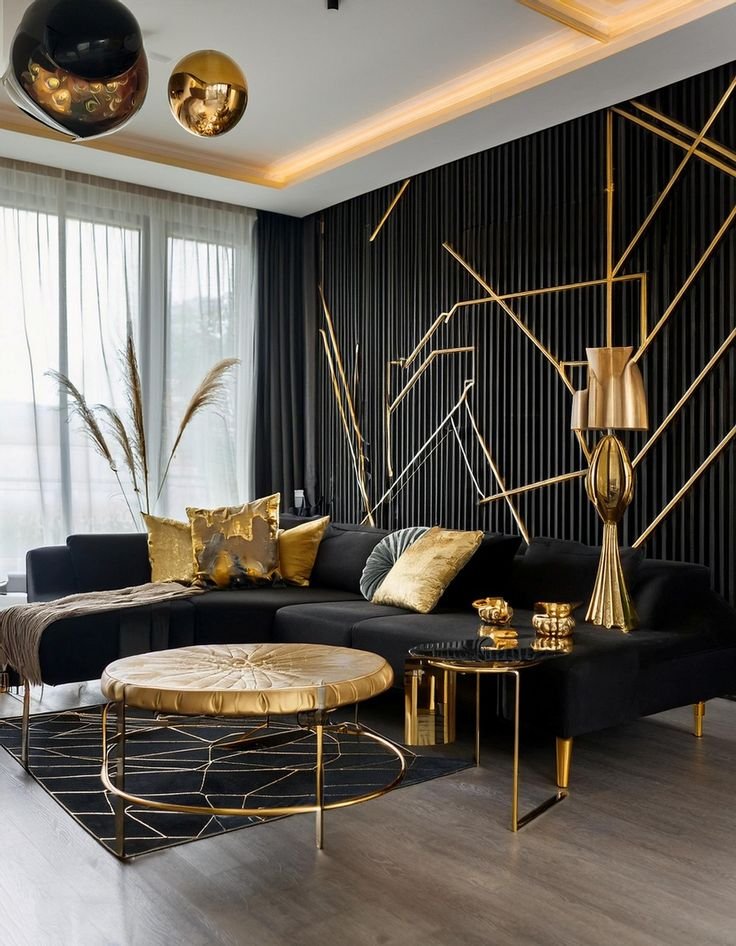Versatile and advanced coating processes are entering the market to meet modern needs and growing demands. Physical Vapor Deposition, also known as PVD, is one such process. Various industries use it to enhance product durability, appearance, and functionality. PVD coating is widely used across multiple items, including jewelry and high-performance industrial tools. Because of its long-term protection from wear, PVD coating has entered the furniture industry. This blog is an overview of PVD coating, its benefits, its application, and the technical aspects of the deposition process.
What is PVD coating?
What is PVD Coating?
PVD coating is a vacuum-based process that involves condensation of a material, typically a metal or ceramic, onto the surface of a substrate. The process transforms the material into a vapor state, allowing it to condense on a targeted surface, forming a thin, durable, and decorative layer. PVD is an eco-friendly alternative to traditional plating techniques and methods like electroplating. The demand for PVD is rising due to its unique properties, which provide enhanced strength and are wear-resistant.
Four crucial steps
PVD coating has four stages: evaporation, transportation, reaction, and deposition.
Evaporation: During the evaporation process, a target is bombarded by a high-energy source, such as a beam of electrons or ions. This knocks out the atoms from the target, vaporizes them, and deposits the material on the workpiece.
Transport: Transport is the movement of the vaporized atoms from the target to the substrate or the product that needs to be coated.
Reaction: During the coating process, wherein metal is the target, the PVD coating contains metal oxides, nitrides, carbides, and similar materials. The metal atoms then react with the selected gas during the transport stage. Gasses like oxygen, nitrogen, and methane are used during this process.
Deposition: During deposition, the coating builds up and bonds to the substrate's surface, slightly penetrating it to give a lasting level of adhesion.
Various coating techniques:
Various techniques are used during PVD coating to achieve a perfect, hassle-free coating. This section will examine the methods used and their unique characteristics.
Sputtering:
Sputtering is the most commonly used process for PVD coating. During Sputtering, irons are accelerated towards the target material, causing atoms to dislodge and deposit on the substrate. Sputtering is best known for this unique characteristic, which creates a thin, uniform coating on the substrate.
Evaporation:
During evaporation, the target material is heated to the evaporation point, and then it's allowed to condense onto the substrate. Evaporation is used to produce decorative coatings.
Arc Vapor Deposition:
Arc Vapor Deposition is a technique that uses an electric arc to vaporize the coating material, producing a high-energy plasma that condenses on the substrate. It is used for coatings, which require enhanced hardness.
Use of PVD coating
PVD coating is helpful across various industries and is valued for its durability and aesthetic appeal.
Furniture industry: PVD coating is the latest trend in the market, compared to traditional finishes. There are several reasons why PVD coating on furniture is the first choice for classic modern look. The PVD coated furniture is highly durable, scratch, abrasion, and corrosion-proof, safeguarding your furniture and keeping it looking great for many years.
Automotive Industry: PVD coatings are very useful in the automated industry, as they improve wear resistance and corrosion protection on car parts, including wheels, trim, and engine components.
Tooling Industry: PVD coating is also used in the tooling and automotive industries. It increases the hardness of tools like drills, cutting blades, and molds and reduces friction, extending lifespan and performance.
Medical equipment: PVD coating is also used in the medical industry. Its biocompatibility makes it suitable for medical devices, implants, and surgical tools, providing a safe, wear-resistant surface.
Jewelry and watches: PVD Coating is well-known and popular in this industry. PVD coating is done on Jewelry and watches' surfaces as they create various colors, adding aesthetic value while making them scratch-resistant.
Aerospace and defense: PVD coatings are also used in the aerospace and defense industry. Aerospace components include jet engines and turbine blades, and they are used in various defense applications as they are durable and capable of withstanding extreme environments.
Benefits of PVD coating
As discussed in previous blogs, PVD coatings and methods offer several benefits over traditional surfaces.
Enhanced Durability:
PVD coatings are durable, it makes the surface harder and more wear-resistant. Which ensures long-lasting performance even in demanding applications.
Corrosion Resistance: PVD coatings are corrosion-resistant. They protect furniture and equipment from rust and corrosion, primarily when used on metal surfaces.
Eco-friendly process: PVD Coating is Eco-friendly as it requires no hazardous chemicals, produces no dangerous toxic waste, and leaves nothing behind.
Superior Aesthetics: PVD Coatings are known for their various finishes and colors, ranging from shiny metallic hues to matte black. They allow both functional and decorative applications, giving them an aesthetic look.
Chemical Resistance: PVD coating is chemical resistant and suitable for use in harsh environments where exposure to chemicals is likely.
The Future of PVD coating
As technology advances, the application and demand for PVD coating continues to grow. To further enhance the process, constant research is being done to make it faster and more cost-effective. Also, the PVD industry is expanding the range of materials used for the coating process. As sustainability and sustainable solutions are our goals, PVD coating will remain popular for its eco-friendliness and efficiency. One of the exciting developments in the field of PVD Coating is its ability to be used on 3D-printed components. PVD coating has opened doors to aerospace, medical and consumer products applications.
At Blackrock Evolution, we use cutting-edge technology with unparalleled durability, aesthetics, and versatility. We improve the lifespan of tools and add a luxurious finish to classic furniture because we believe that PVD coating represents a superior choice for achieving performance and style.


